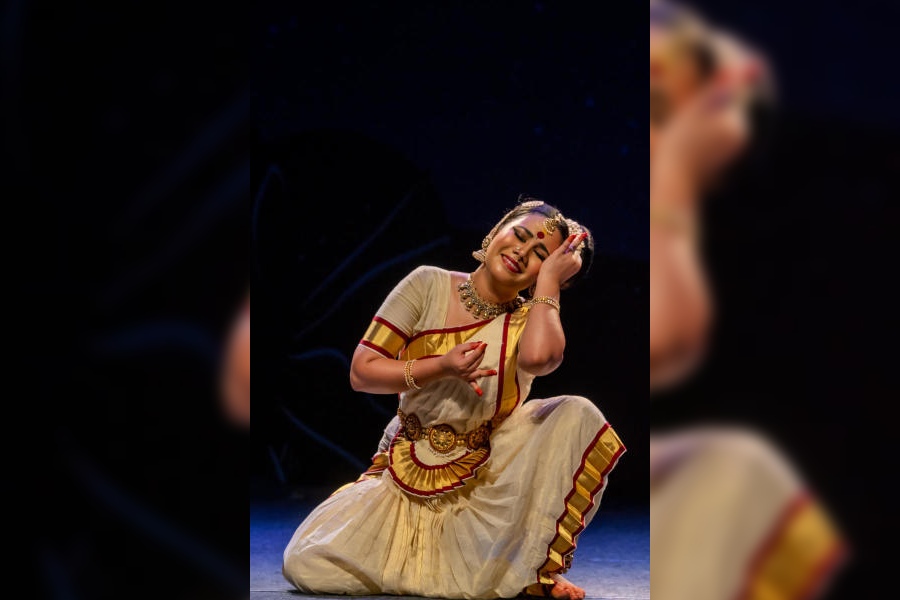Classical dance forms can be a study in contradiction. On the one hand, they are strictly codified and representative of diverse religious and ritualistic systems; while on the other, they can be intersectional, thereby transcending codified boundaries. This syncretism has its roots in the multicultural ethos of the nation. Take, for instance, the two forms, Bharatanatyam and Mohiniyattam. Despite dissonances, interactions between them can yield intriguing dialogues. Anweshaka, presented at the Kolkata Centre for Creativity on July 9, was a powerful attempt to examine such confluences.
The performance was marked by five recitals alternating between the two forms. It opened with Samrat Dutta and his disciple, Santanu Roy, performing a Bharatanatyam set to Nazrulgeeti — “Anjali loho mor” did not seem like a forced juxtaposition at all. The duet featured some spontaneous movements coupled with synchronised footwork, which became the central element in the ensuing alarippu, a pure nritta that built up the tempo using rhythmic patterns.
Next was a stretched-out Mohinayattam recital by Malavika Menon that saw the danseuse perform to selected verses of Tagore's Gitanjali which had been incorporated into the evolving framework of Mohiniyattam by her guru, Vineetha Nedungadi. Menon's supple postures conveyed the eternal journey of the nayika towards unity with the paramatma. They were assisted by consummate choreography which, while seemingly avant-garde, retained the textual nuances. However, it was in the fourth recital, Omanathingal kidavo (picture), a lullaby composed at the height of British oppression, that Menon proved her dexterity. The recorded music was cut short owing to a technical glitch but it was marvellous to witness Menon portraying the theatricality of the piece by performing to silence.
The third element was the dance-drama, Sri Rama Chandra, by Dutta and Roy, which saw the duo employ multi-roling within the paradigm of Bharatanatyam to etch out the various characters. The concluding piece, the jugalbandi between the two dance forms, while falling short of the visual spectacle, harked back to their consonances.










